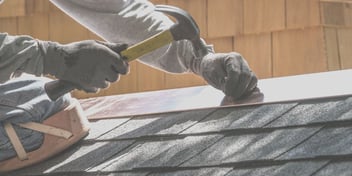- Home »
- Learningcenter »
- Flashing flat roof leak
Why Flat Roof Flashing is The Top Cause of Flat Roof Leaks
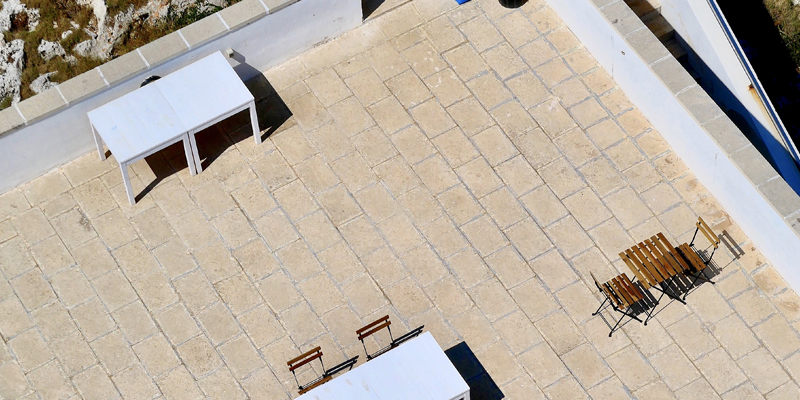
There are only a few things that are as concerning as noticing water leaking through the ceiling of your commercial building. While there are many potential causes of roof leaks, flat roof flashing is the most common culprit.
Why is that, and what can you do to prevent your flashing from failing and allowing water to intrude into your building?
In this article, we’ll dive deeply into the world of roof flashing, why there’s a good chance your flashing has caused your leak, how to identify damaged flashing, and much more.
What Is Roof Flashing?
Before we dig into why flat roof flashing is the top cause of flat roof leaks, let’s talk briefly about precisely what roof flashing is and the purpose it serves.
Flashing is a thin, flat piece of metal used to direct water away from joints and seams in the roof while preventing water from penetrating cracks and openings. This material is used around vents, chimneys, skylights, and other roofing features that create areas vulnerable to water intrusion on your roof. Flashing is also installed on the edges of the roof to protect the roofing membrane further.
In addition to keeping water out of the structure, flashing around the edges of a roof can prevent roofing materials from being loosened and lifted due to high winds.
Why Is Flashing the Top Cause of Flat Roof Leaks?
Roof flashing can be compromised in various ways, including improper installation, normal wear and tear, age, deferred maintenance, a settling foundation, and damage to the flashing.
Because flashing is responsible for directing water away from vulnerable areas of the roof and is made of thin material, even a tiny tear or disturbance can mean that water can enter your building.
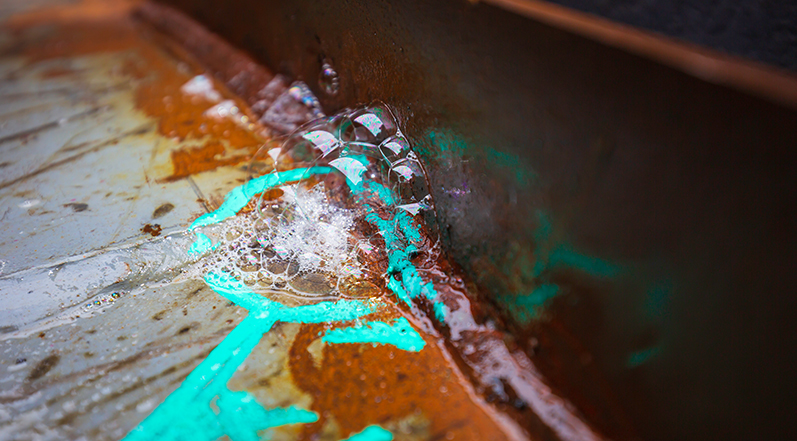
Essentially, roof flashing is essential to your roofing system to ensure that water is not intruding into joints and seams. Water can penetrate the roofing system and enter the structure when it deteriorates or is otherwise damaged.
What Types of Flashing Is Used on a Flat Roof?
Several different types of flashing are used on any roof in order to weatherproof spots where penetration could occur. The kinds of flashing that will be installed as a part of your roof system will depend on the specifics of your roof, including whether there are any skylights, chimneys, pipe vents, or other systems installed.
Chimney flashing is a type of flashing that consists primarily of what is known as counter flashing. Counter flashing is a flashing that covers the top of a different kind of flashing, for example, step flashing.
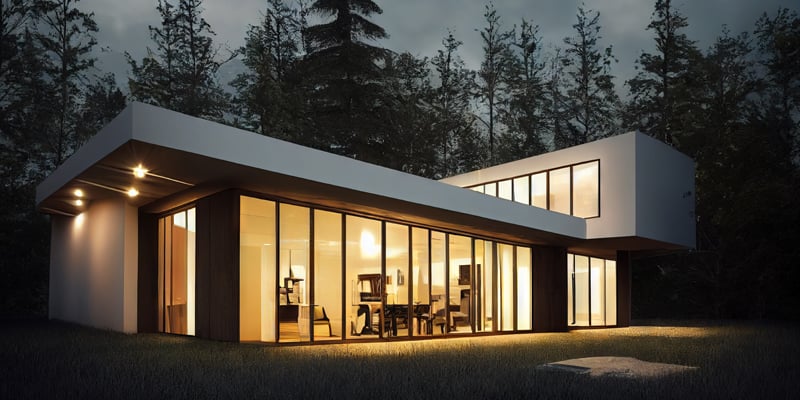
Flashings must overlap so that water cannot get behind the flashing through the top and enter the building.
Apron flashing is used in spots where there are vertical walls that intersect with the roof. It helps to direct water off the roof in the proper direction.
Another type of flashing is known as gutter apron flashing. This type of flashing is installed along the gutter line where the gutter and the roof meet. A drip edge on this flashing keeps water from getting into the gap between the roof sheathing and the fascia trim board; this is an essential part of how water is directed into the gutters and away from the structure.
How to Identify Flashing Damage
It is generally recommended that you inspect the flashing on your commercial roof annually to look for any signs of breakdown or damage. Let’s look at some of the things that a roofing professional will look for when inspecting your roof or that you can keep an eye out for yourself.
1. Leaks In Your Roof
You might not need to get on your roof to realize that your flashing is compromised. If you don’t notice damage or degradation to your flashing before water can enter the building, you will likely start to see water damage in the form of brown spots on the ceiling or dripping water.
Leaky roof flashing can cause serious damage to the ceiling, such as brown spots, mold, and water damage. When leaking roof flashing occurs, it can damage the roof decking and cause brown spots on the ceiling. These spots may indicate water seeping into the attic or between the decking and insulation. As the water collects and dries, it leaves a brown stain behind. This brown stain can be seen inside the home or on the roof itself.
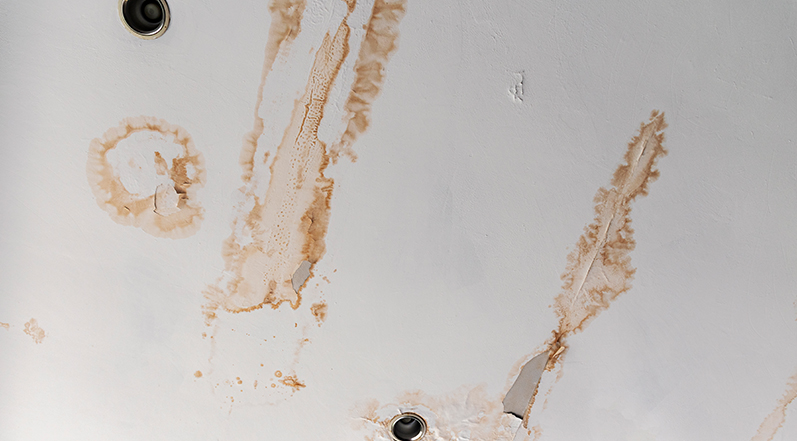
Mold is another common issue caused by leaking roof flashing. The moisture will often settle on wood or other organic materials in the attic and begin to grow mold colonies. If the mold is not treated promptly, it can spread and cause health risks for anyone living in the home.
Water damage is also common when leaking roof flashing is present. If left unchecked, the moisture will slowly seep into the walls and ceilings of your home and cause significant damage; this may include warping or sagging of drywall, discoloration of walls and ceilings, and even rot if it’s left unchecked for too long.
2. Dents, Cracks, and Bends
The steel used for flat roof flashing is commonly made of galvanized steel.
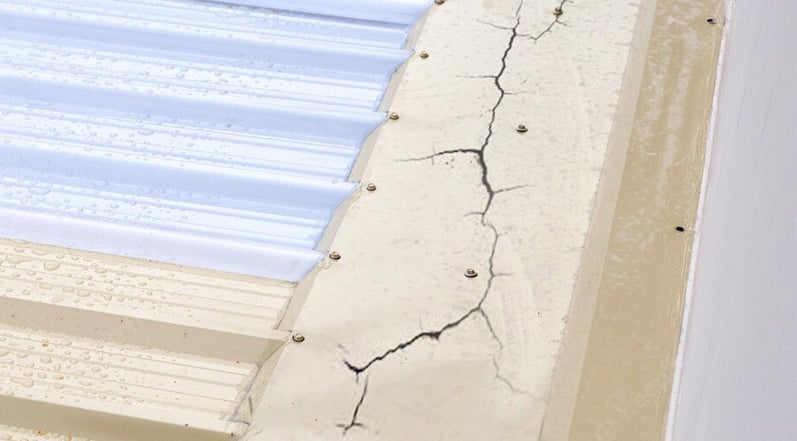
The galvanized coating can break and become compromised when there are cracks, dents, or bends in the metal; this makes it more prone to rusting from water exposure and humidity, which will lead the flashing to break down faster and eventually be unable to protect your commercial building from water intrusion.
3. Holes
Since flat roof flashing is an essential service for your roof, it only takes a tiny hole to compromise it. No matter how small a hole is, water can enter into joints and other vulnerable areas when there are holes in your flashing.
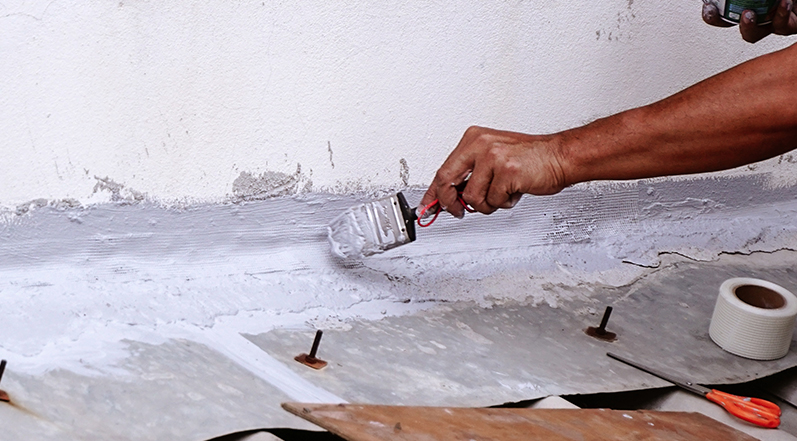
Depending on the state of your flashing, you might choose to have the holes sealed, or it might be time for flashing replacement.
4. Rust
Even though there are usually galvanized coatings on roof flashing, that doesn’t mean it is entirely immune to rusting. Over time, rust can form on the flashing, leading to roof leaks.
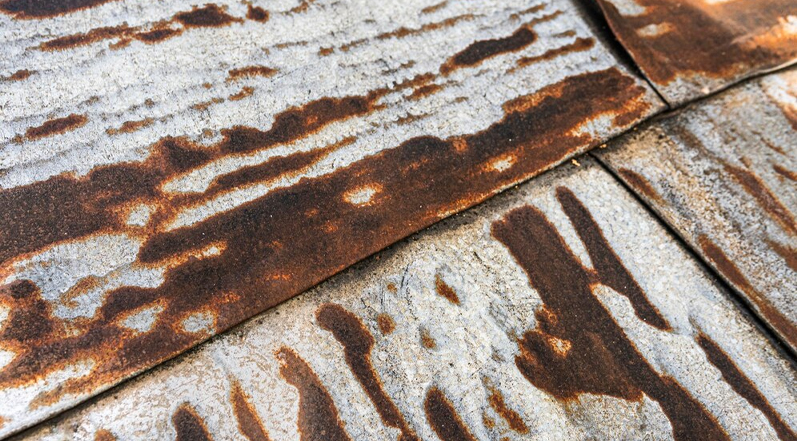
If there is rust on your roof flashing, you’ll want to consult a flat roofing professional about whether it should be cleaned and sealed or if it’s time to replace the flashing.
5. Missing Flashing Pieces
The flashing on your roof can become loose due to extreme weather and high winds. If pieces of flashing are missing from your flat roof, it means that joints and seams aren’t protected from water and the elements.
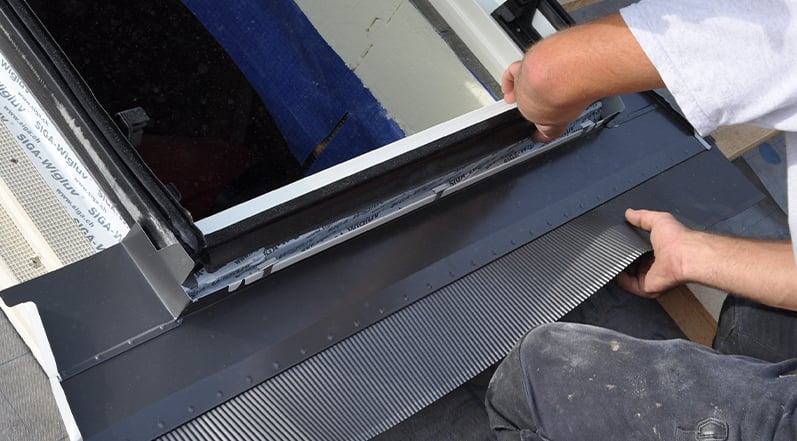
This process is a repair that you will want to have performed right away to prevent leaks and damage from occurring to the structure.
6. Mold or Stains on Fascia Boards
A less obvious sign of flashing damage is mold or stains on your fascia boards.
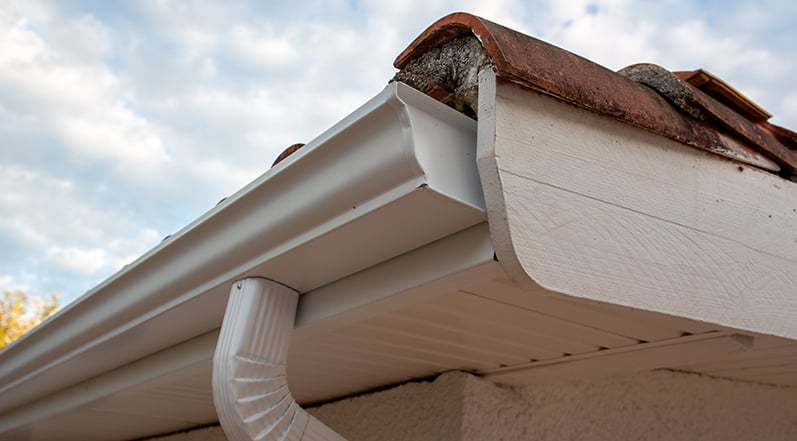
This evidence of moisture and water intrusion can occur if the drip edge flashing isn’t installed correctly.
7. Damaged Siding or Shingles
When flashing isn’t correctly shedding water from your roof, it can damage your siding or shingles.
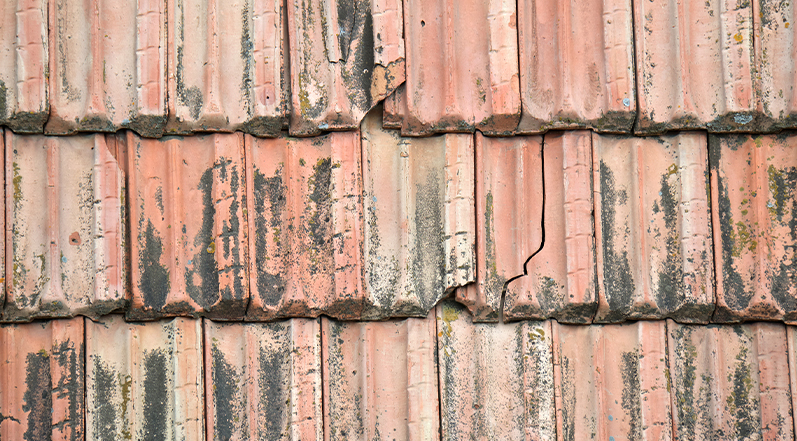
This damage might be visible near the flashing or in low spots.
How Often Should Roof Flashing Be Replaced?
If you are already looking at getting your roof replaced, consider replacing your flashing simultaneously. It can be reused if your flashing is brand new and in good condition. However, flashing typically lasts about the same number of years as the roof itself, so if it was installed simultaneously, it is likely best to have both jobs done simultaneously.
Reusing the same flashing is also kind of a tricky job because it is hard for your current roofing contractors to know if the flashing had been repaired in the past, if the flashing was correctly installed the first time around, and how many times the flashing has been reused over the building’s lifespan.
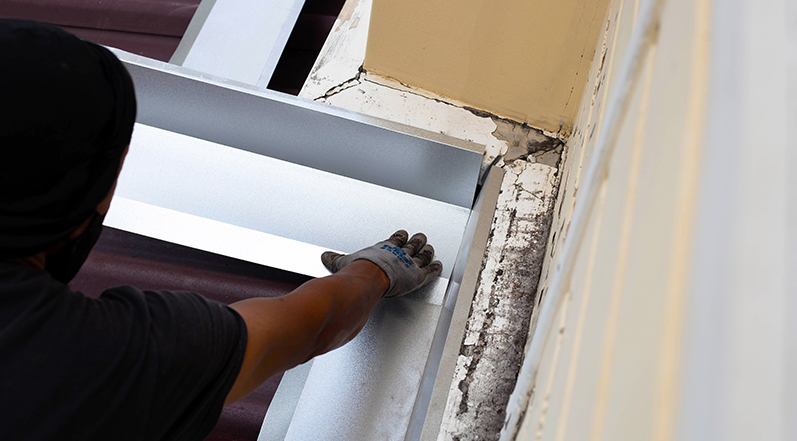
Some experts estimate that the life expectancy of roof flashing, when properly installed, can be up to 40 years. However, it’s not necessarily a good idea to write a date on your calendar four decades from now to replace your flashing. Instead, you will want to inspect your flashing annually or at least once every two years to ensure it is still in tip-top shape.
What Are Other Common Causes of Flat Roof Leaks?
While flat roof flashing is the top cause of flat roof leaks, there are several other potential culprits. Let’s take a quick look at some of the other common causes.
1. Improperly Installed or Poorly Maintained Roofing Membranes
Unfortunately, another common reason that flat roofs leak is that they weren’t properly installed in the first place; this is one of the reasons it’s so important to choose a reliable, trustworthy, and experienced commercial roofing contractor when you are repairing or replacing your flat roof.
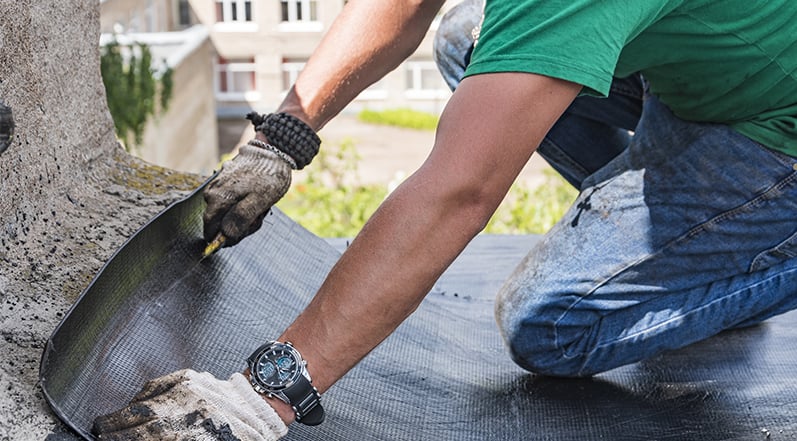
What is the process for repairing TPO roofing? Look at this article that explores the most common issues with TPO and the process of repairing it.
Is it time to replace your flat roof? If so, use this Learning Center guide to learn how to know when to replace a flat roof.
2. The Age of the Roofing
Practicing regular and preventative maintenance strategies can help your roof last a long time and allow you to catch problems before they become large and expensive. Even so, all roofs eventually get too old and cannot protect your building effectively anymore.
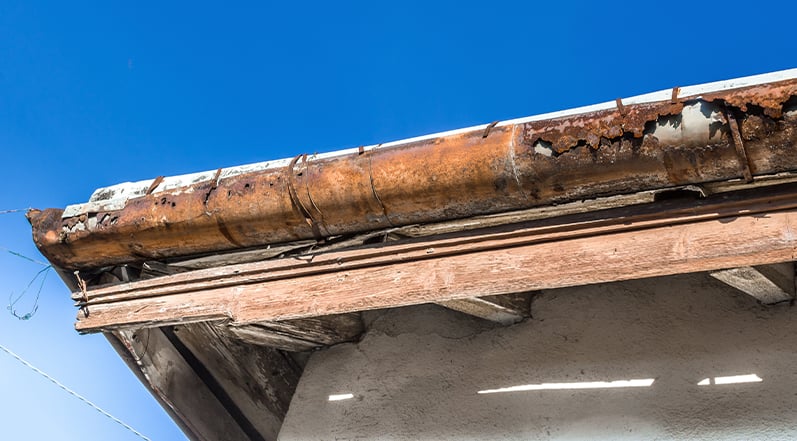
When roofing materials grow older, they become more susceptible to leaks over time. Several factors influence how quickly your roof will degrade, including the roofing materials you use, the environment the building is in, and the quality of the installation.
3. Damage to the Roofing Material
Roofing material can become damaged in several ways, including physical or mechanical impact. This damage can lead to punctures in flat roofs that lead to leaks.

Other causes of roofing material and membrane damage include falling trees and heavy storms.
4. Soffit and Fascia Damage
The fascia and soffits on a building exist to protect the wooden framework of the property and secure the gutter system.
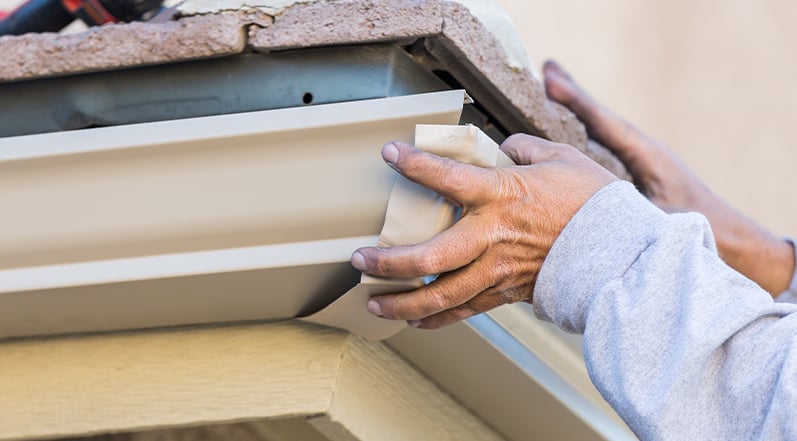
Rotting and damage can occur to fascia and soffits, which can usually be spotted as discoloration often forms where water is leaking.
5. Blocked Gutters
It’s possible that the cause of your leaking roof doesn’t have to do with the roof itself. Gutters that aren’t properly maintained can get filled with leaves, dirt, sticks, and other organic matter.
When gutters are blocked, they can’t perform their function of moving water away from the structure. Instead, water can overflow in the gutters and flow back into the roofing structure they are supposed to protect.
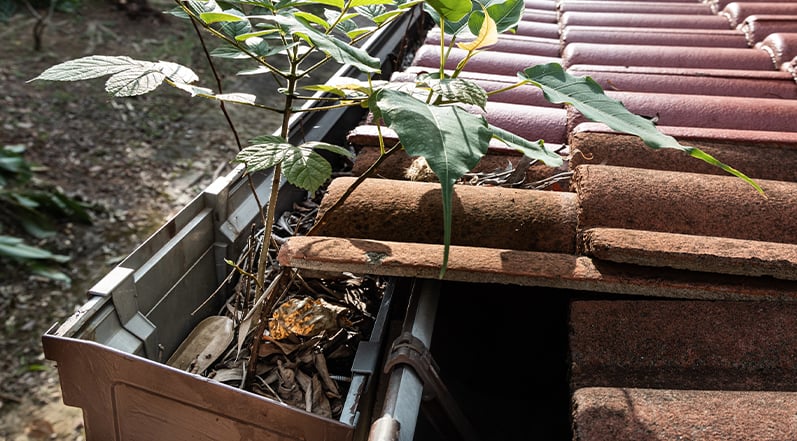
If it’s about time to replace your roof and your gutters have been causing you some headaches, you might be wondering if you should replace the gutter system at the same time. The answer to this question will depend on several factors, like the material of your gutters, how old they are, the condition they’re in, and the type of gutters your new roofing system will require.
6. Poor Drainage
Another common cause of roof leaks, particularly for flat roofs, is poor drainage. The reason for this is simple: it’s easier for rain and melting snow to collect on a flat roof than on a roof built with a slope.
That said, this doesn’t necessarily mean that a flat roof is bad. Installing a flat roof on a commercial building can help to keep construction expenses down, are easy to clean and maintain, and have added energy efficiency benefits.
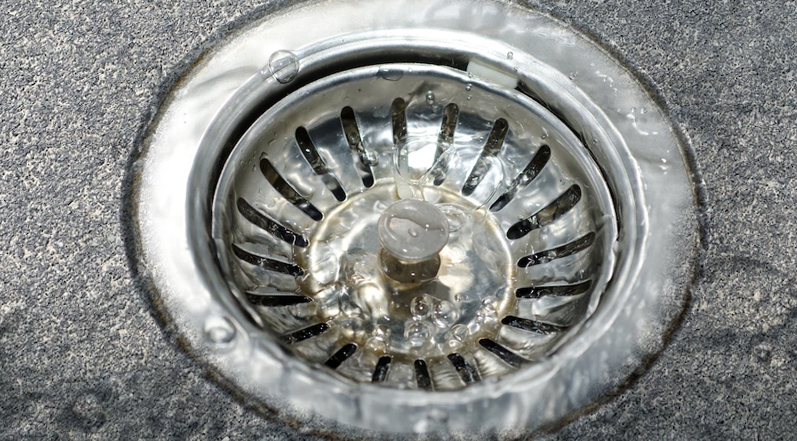
What it does mean, though, is that it’s essential to have a drainage system properly installed on flat roofs. Otherwise, water can pool and damage the roof and even the structure.
You can use this guide about flat roof drainage to understand how a properly installed flat roofing system prevents ponding water and leaks.
Colony Roofers: Atlanta’s Commercial Roofing Experts
If you are searching for a reliable, affordable, and efficient commercial roofing contractor to help you repair or replace the flat roof on your building, you’ve come to the right place. Having a functional roof over the head of your employees, equipment, and customers is an essential part of running a successful business, and our number one priority is protecting you and your business from the elements.

Whether you’re dealing with a flat roof leak due to flashing issues or a storm that damaged your roof, we’re here to help. Are you shopping for roofing contractors for a brand-new build? We’d love to work with you on that, too.
For more than a decade, Colony Roofers has been providing high-quality commercial roofing services to the Atlanta area. No matter what type of roofing issue or project you have on your mind, we can quickly give you an estimate.
If you require a roof repair or have any questions, don’t hesitate to contact us today.
 Call (678) 365-3138
Call (678) 365-3138

